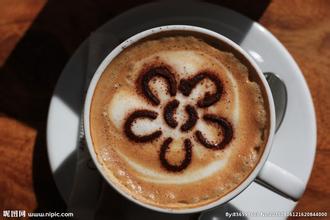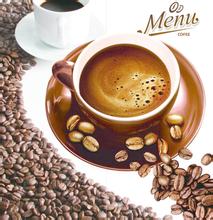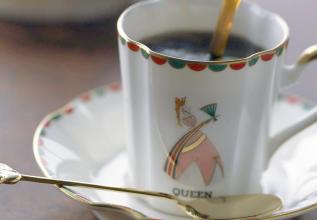Brazilian coffee roasting curve table-what is the coffee baking curve
Brazilian coffee roasting curve table-what is the coffee baking curve
When baked for 5-7 minutes, the beans begin to release water, changing from light green to orange, emitting the unique aroma of creamy roasted vegetables.
Light baked ─ when the beans make the first light sound, the volume expands at the same time, and the color changes to a delicious cinnamon color, so it is also called cinnamon raost or half-city roast. Acidity dominates the flavor of shallow roasted beans, texture and taste have not been brought into full play, so they are generally used as canned coffee, can not meet the real coffee experts.
When roasted in medium ─ for 10-11 minutes, the coffee beans are elegantly brown. New Yorkers like to start each day by roasting coffee beans with fragrant milk and sugar at breakfast, so this method of baking is also called breakfast roast or city roast. Medium roasting can not only preserve the original flavor of coffee beans, but also moderately release aroma, so Blue Mountains, Colombia, Brazil. Wait for a single cup of coffee, choose this kind of baking method.
Since the opening of the free market in 1990, the original Brazilian Coffee Authority (IBC) has been replaced by the National Economic Association, the country's non-investment administrative body, which pursues a policy of non-intervention and allows producers to negotiate directly with exporters. The business activities of exporters are supervised by government legislation, and the relevant departments register legitimate exporters. Brazilian coffee has a low sour taste, matched with the sweet and bitter taste of coffee, and the entrance is extremely smooth, but also with a touch of grass fragrance. Slightly bitter in the fragrance, smooth and smooth, the aftertaste can make people comfortable and pleasant. There are no outstanding advantages for Brazilian coffee, but there are no obvious defects. The taste is mild and smooth, the acidity is low, the mellow is moderate, and there is a hint of sweetness. All these soft flavors are mixed together. To distinguish them one by one is the best test for the taste buds, which is why many Santos fans love this kind of coffee, just because it is so mild and ordinary. Santos is suitable for ordinary baking and brewing in the most popular way. It is the best raw material for making Italian espresso and all kinds of fancy coffee.
Brazilian coffee generally refers to coffee produced in Brazil. There are many kinds of Brazilian coffee, and like other Arabica coffee, Brazilian coffee is called "Brazils" to distinguish it from "Milds" coffee. The vast majority of Brazilian coffee is unwashed and sun-dried and is classified according to the name of the state of origin and port of transport. Brazil has 27 states and 17 states produce coffee, but four of them produce the largest, accounting for 98% of Brazil's total output. They are: Parana, SaoPaulo, MinasGerais and EspiritoSanto. The southern state of Parana is the most impressive, accounting for 50% of the total.
Since the introduction of coffee trees from French Guiana (Guyana) in 1720, coffee production has gradually become a science. Before 1990, the Brazilian government carried out strict monitoring of the coffee industry, with both strict intervention and price protection measures, and the state has been implementing minimum price protection measures for farmers, resulting in coffee overproduction. Before World War II, the surplus stock reached 78 million bags, which had to be burned by fire or thrown into the water to destroy.

Important Notice :
前街咖啡 FrontStreet Coffee has moved to new addredd:
FrontStreet Coffee Address: 315,Donghua East Road,GuangZhou
Tel:020 38364473
- Prev

Flavor Description of the Brazilian Queen Estate Coffee Bean Grind Scale Processing Taste Characteristics
Flavor Description of the Brazilian Queen Estate Coffee Bean Grind Scale Treatment Taste Characteristics Although coffee has a variety, Brazilian coffee is suitable for the taste of the masses. For example: coffee produced in northern coastal areas has a typical iodine taste, reminiscent of the sea after drinking. This coffee is exported to North America, the Middle East and Eastern Europe. And there's a coffee that's fun and worth pursuing. It's rinsed coffee.
- Next

Description of taste and flavor of Honduran coffee beans produced by grinding scale method
The taste and flavor of Honduran coffee beans is described by grinding scale. The rating of Central American coffee is based on the altitude at which coffee is grown. Mexico, Honduras, Haiti and other countries are highly graded Strictly High Grown (extremely high mountain beans, referred to as SHG), followed by High Grown (mountain beans, referred to as HG) Mexico called Altura, in Spanish.
Related
- Detailed explanation of Jadeite planting Land in Panamanian Jadeite Manor introduction to the grading system of Jadeite competitive bidding, Red bid, Green bid and Rose Summer
- Story of Coffee planting in Brenka region of Costa Rica Stonehenge Manor anaerobic heavy honey treatment of flavor mouth
- What's on the barrel of Blue Mountain Coffee beans?
- Can American coffee also pull flowers? How to use hot American style to pull out a good-looking pattern?
- Can you make a cold extract with coffee beans? What is the right proportion for cold-extracted coffee formula?
- Indonesian PWN Gold Mandrine Coffee Origin Features Flavor How to Chong? Mandolin coffee is American.
- A brief introduction to the flavor characteristics of Brazilian yellow bourbon coffee beans
- What is the effect of different water quality on the flavor of cold-extracted coffee? What kind of water is best for brewing coffee?
- Why do you think of Rose Summer whenever you mention Panamanian coffee?
- Introduction to the characteristics of authentic blue mountain coffee bean producing areas? What is the CIB Coffee Authority in Jamaica?

